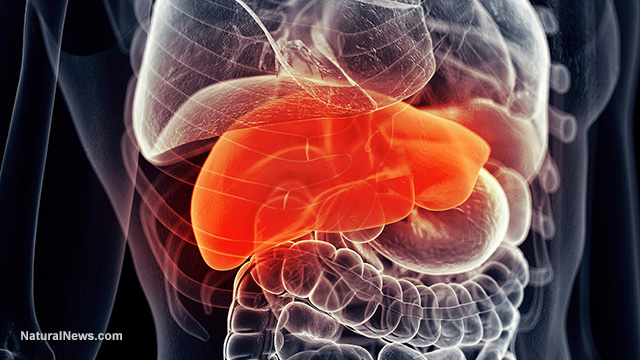 One of the most important organs in the body is the liver, and when it’s working as it should, it cleans the blood of toxins, aids in the digestion of food and helps fight off infection. In addition, the liver has the ability to regenerate when it has been damaged, as in trauma, replacing old tissue with new.
One of the most important organs in the body is the liver, and when it’s working as it should, it cleans the blood of toxins, aids in the digestion of food and helps fight off infection. In addition, the liver has the ability to regenerate when it has been damaged, as in trauma, replacing old tissue with new.
As reported by Medical Daily, the American Liver Foundation notes that anything which prevents your liver from doing its assigned jobs, or from repairing itself after injury, “may put your life in danger.” That can be anything from inflammation and scarring, to cancer or simply taking too many over-the-counter medications like Tylenol.
Despite the fact that the liver is inside the body, a poorly-functioning organ produces some outwardly visible signs that should always be heeded.
Turning yellow:
When your liver isn’t working properly, your skin and the whites of your eyes can become discolored, turning a milky yellow due to the accumulation of a yellowish substance called bilirubin, the U.S. National Library of Medicine notes. The condition is called jaundice, and it also results in darkened urine and your stools becoming lighter than normal.
The UK’s National Health Service reports further that when the liver is damaged and jaundice appears, it is due to the organ’s inability to process bilirubin. Common causes of this kind of extensive liver damage include drinking alcohol to excess on a chronic basis, the abuse of the drug Ecstasy, cancer, hepatitis, various infections and other exposure to toxic substances.
Excretions changing color:
As stated above, the color of urine will darken, while stool color gets lighter.
Itching:
According to the Mayo Clinic, one of the signs of early liver damage is systemic itching. Your itching may be limited to a certain region, such as your arms or legs, or it may be occurring all over your body. The itching can occur without any other noticeable changes on the skin, but it could also be associated with redness, bumps, spots, blisters, dry and cracked skin, or a leathery, scaly texture to the skin.
At times, the itching can last for a long while, while becoming intense. As you rub or scratch the area, it becomes even more irritated and itchy. And while breaking the itch-scratch cycle can be difficult, if you continue, it’s more likely you’ll damage your skin or get an infection.
Easy, frequent bruising:
Folks with damaged livers will tend to bruise and/or bleed much more easily because the organ has slowed or ceased production of proteins that are vital to blood clotting, says the National Institute of Diabetes and Digestive Kidney Diseases. Your liver actually produces a number of different clotting agents, all of which will begin to disappear when the organ is damaged.
Swelling:
When the liver can no longer adequately do its job, it can cause you to begin to retain water in you abdomen, legs and hands, which causes a great deal of swelling. Also, this swelling can disrupt the function of the heart if there is enough buildup of excess fluid.
Or … no signs at all:
In some cases when the liver is dysfunctional, there may actually be no outward physical signs at all. The University of Iowa Hospitals and Clinics reports that up to half of people who have liver disease show no outward signs of it. What’s more, Medical Daily points out that in the cases where there are mild symptoms, the most common “are very nonspecific and they include fatigue or excessive tiredness, lack of drive, occasionally itching.”
But once a person progresses beyond these early unseen or barely seen symptoms, damage to the liver and the resultant side effects will become much more pronounced. The American Liver Foundation says that people may experience a bursting of blood vessels leading to their liver, while unfiltered toxins can collect in the brain causing impaired mental function and capability.
There is even “risk of coma and death,” according to the foundation.
Written by J. D. Heyes and published at Natural News, November 26, 2016.
FAIR USE NOTICE: This site contains copyrighted material the use of which has not always been specifically authorized by the copyright owner. We are making such material available in our efforts to advance understanding of environmental, political, human rights, economic, democracy, scientific, and social justice issues, etc. We believe this constitutes a ‘fair use’ of any such copyrighted material as provided for in section 107 of the US Copyright Law. In accordance with Title 17 U. S. C. Section 107, the material on this site is distributed without profit to those who have expressed a prior interest in receiving the included information for research and educational purposes. For more information go to: http://www.law.cornell.edu/uscode/17/107.shtml“
